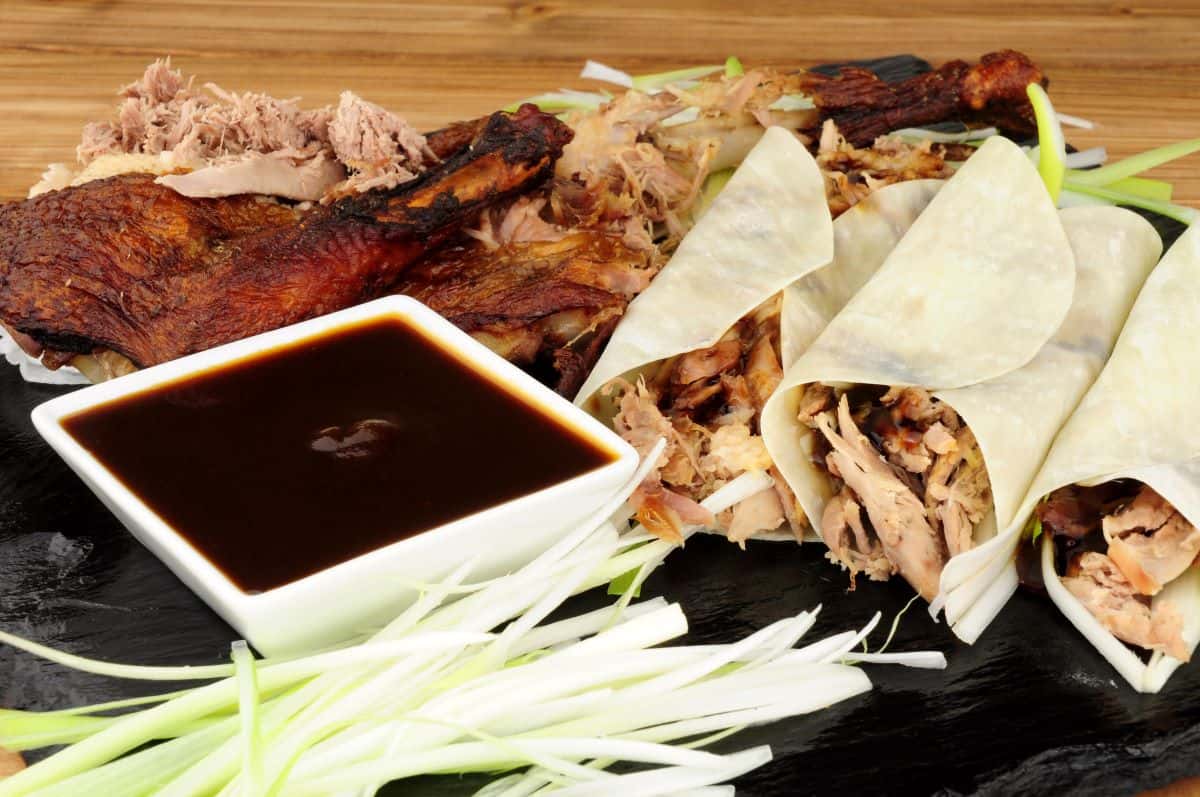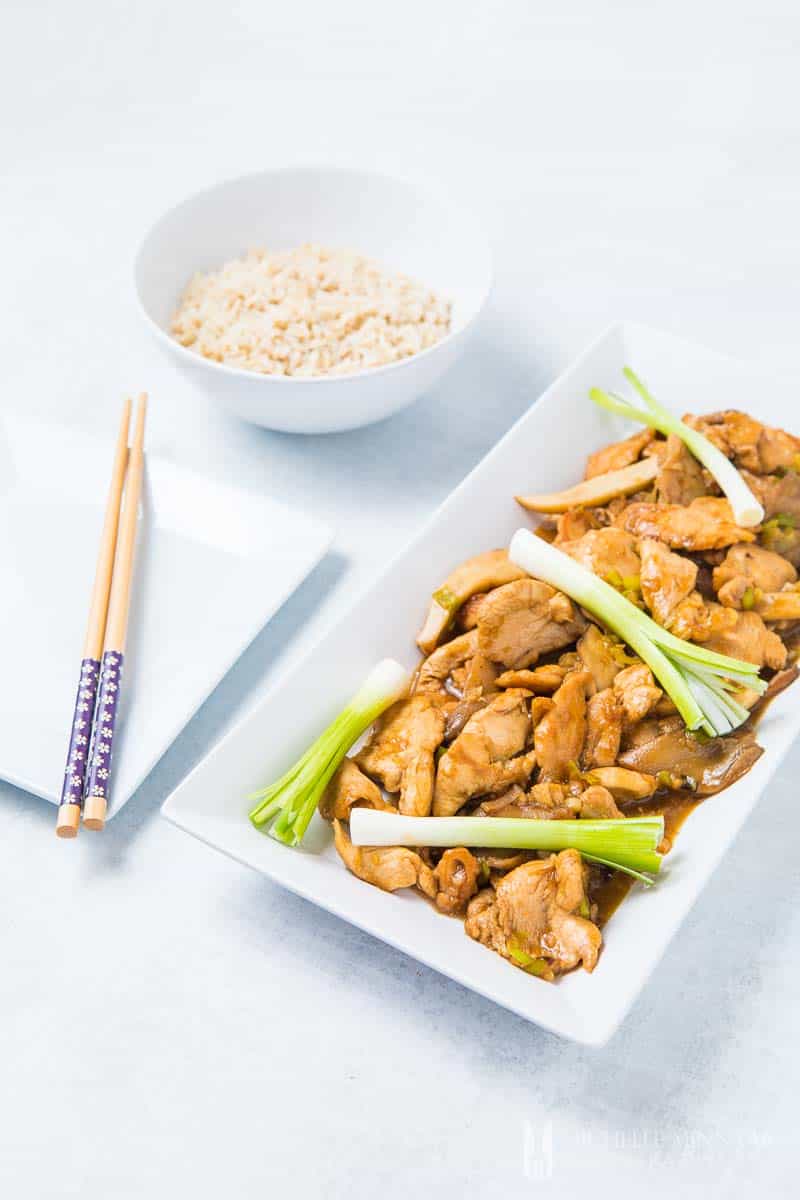If you've ever cooked Chinese cuisine, you've probably seen hoisin or oyster sauce on the ingredient list for the recipe. If so, you may be wondering what these sauces are made of and the difference between the two of them. Can they be used together and what dishes do they really compliment?
If you're curious to learn more about the differences and similarities, read on to learn everything you need to know about hoisin sauce vs oyster sauce.

What is the difference between hoisin sauce and oyster sauce?
There are several different sauces that are popular components in Chinese, and other Asian cuisines such as Thai and Vietnamese. Fish sauce, soy sauce, gochujang, and sambal are among the many varieties that are worth trying the next time you whip up an Asian noodle dish. When it comes to hoisin vs. oyster sauce, the two may seem the same, but they have some subtle and major differences.
Hoisin comes from the Cantonese word for seafood, although it is rarely used to accompany seafood, and the sauce itself does not contain any seafood products. Hoisin sauce is instead made from fermented soybean paste as the base. Typically Chinese five-spice powder, garlic, red chili peppers, and sugar are added. Sometimes, vinegar and fennel are also added to hoisin sauce.
Hoisin sauce has a sweet and rich umami flavor and a thick consistency. It is reddish-brown in color and slightly lighter than oyster sauce. Hoisin sauce is an entirely vegetarian and vegan option.
On the other hand, oyster sauce is a salty condiment that is made from oyster extract. It is created when the oyster extract is boiled down and then caramelized. Salt and sugar are then added to the oyster extract and sometimes cornstarch to help thicken it.
Oyster sauce has a thin syrup-like consistency and is surprisingly not extraordinarily fishy tasting. Oyster sauce is very dark brown in color and has a salty, slightly sweet, and earthy flavor.
Can I use hoisin and oyster sauce interchangeably?
Yes, you can use hoisin and oyster sauce interchangeably. Which one you choose to use will depend on your preference and dietary restrictions. Both oyster and hoisin sauce can be used in stir-fried dishes, Sichuan noodles, as an ingredient in a dipping sauce, and on tasty duck pancakes. Both oyster sauce and hoisin sauce are commonly found in lots of dishes in Cantonese cuisine.
Hoisin sauce will make your dish slightly sweeter than using oyster sauce, which will add more of a salt element to whatever you are making. If you are not worried about sticking to a vegetarian diet, adding a little fish sauce to your hoisin sauce will balance out the sweetness and give it richer umami flavors. Adding soy sauce to your hoisin sauce can also accomplish a similar flavor, but with no fishiness.
You can substitute oyster sauce in the same dishes as hoisin sauce by simply lowering the salt content in the rest of the dish and even adding a little extra sugar if you are missing the sweet flavor from the hoisin sauce.
Since both hoisin sauce and oyster sauce have thick consistencies, they can be used interchangeably to produce a glaze on meats or vegetables. Hoisin sauce is a bit thicker than oyster sauce, but they will both caramelize nicely since they each contain fair amounts of sugar, though oyster contains the lesser of the two.

Can you mix hoisin sauce and oyster sauce?
Yes, you can mix hoisin sauce and oyster sauce together. Doing so will produce a sauce similar to teriyaki sauce but sweeter, with umami layers of flavor. The flavor will be a little more intense and layered than that of typical teriyaki sauce, but it will still work if you are not particular about it having a very traditional flavor.
If you are in a pinch and need a teriyaki sauce but don't have any on hand, you can use two parts oyster sauce and one part hoisin sauce to create a unique flavor combination that is similar but different from the stuff you buy in a bottle.
Can you substitute teriyaki sauce for hoisin?
Yes, but with a few rules. Both teriyaki sauce and hoisin sauce are thick sauces used on meat and vegetable dishes. Teriyaki sauce is of Japanese origin, while hoisin sauce comes from Chinese cuisine.
Hoisin sauce is known for its sweet flavor profile, while teriyaki sauce tends to be only slightly sweet with some acidity. While teriyaki sauce usually contains soy sauce, ginger, and sugar, hoisin sauce is made from fermented soybeans, sugar, red chili flakes, and ginger. The fermented soybeans create a different complexity in the hoisin sauce that does not come from soy sauce.
While both sauces are fine to replace one another within a dipping sauce or condiment, when using them in dishes it may become more complicated.
Since teriyaki is thicker than hoisin, it may be necessary to add some cornstarch as well as some sugar to make up for the sweetness. You can also add some rice vinegar to give it some more flavor like hoisin sauce.
In order to make hoisin suitable for use in a dish that calls for teriyaki, simply diluting the hoisin sauce with some water will make the consistency similar.
Keep in mind that the hoisin sauce will be much richer and more complex in flavor than teriyaki and will yield a different result than you would expect from a teriyaki sauce.

Is oyster sauce vegetarian?
No, oyster sauce is not considered vegetarian because it contains oyster extracts. For this reason, if you are looking for a vegetarian substitute, try mixing hoisin sauce, which is vegan and vegetarian, with a little soy sauce to create the salty oyster sauce taste.
When should you use hoisin sauce vs when should you use oyster sauce?
Although oyster sauce and hoisin sauce can be used interchangeably, there are some times when it is better to use one or the other. Since oyster sauce is saltier and hoisin sauce is sweeter, remember to consider this when choosing which one to use in a dish.
Oyster sauce
- When you are looking for a funky and salty flavor
- When you do not want a lot of sweetness in your dish
- When you want a looser sauce and need salt for your stir fry
Hoisin sauce
- When you are looking for sweetness and caramelization
- When you are looking for a vegan or vegetarian option
- When you are making a dip for pancakes or dumplings
Hoisin or oyster sauce for fried rice?
When making fried rice, if you are sticking to a traditional Asian flavor, oyster sauce is best to use instead of hoisin sauce. The salty flavor of the oyster sauce compliments the other components of the fried rice in a more traditional way than hoisin sauce will.
Keep in mind the salt content of oyster sauce is high, and avoid adding other salty sauces such as soy sauce or fish sauce so that your fried rice does not get ruined by too much of a good thing.

How to use oyster sauce in your recipe
Oyster sauces contain a good amount of salt and umami flavor that adds complexity to any recipe. Oyster sauce compliments lots of traditional Asian-inspired dishes and can be used in vegetable and beef dishes alike as well as an ingredient in the dipping sauce for spring rolls.
Oyster sauce is found in many noodle dishes, such as Chinese chow mein. Like many Chinese sauces, to make chow mein sauce, oyster sauce is mixed with soy sauce, sesame oil, ginger, and brown sugar. The noodles are mixed together with the sauce right before being served to create a dry and sticky noodle dish that can be made wetter with the addition of some water.
Another recipe that calls for oyster sauce is Kung Pao shrimp. A spicy and sweet dish with vegetables and shrimp, Kung Pao shrimp benefits from oyster sauce's subtle fish flavor and salty complexity.
Would you like to save this?
Oyster sauce can be used to make the popular Thai noodle specialty dish, pad thai. Although fish sauce, not oyster sauce, is traditionally in pad thai, using oyster sauce is a worthy substitute. Mix oyster sauce, rice vinegar, soy sauce, creamy peanut butter, and brown sugar together to make a delicious homemade pad thai.
Keep in mind that different brands of oyster sauce will have slightly different flavors and salt amounts. It is important to taste and experiment with brands to see what you prefer as your go-to oyster sauce and to replace oyster sauce with an alternative brand if you do not care for one brand's flavor.
Other oyster sauce recipes to inspire you:
How to use hoisin sauce in your recipe
Sometimes called Chinese bbq sauce, Hoisin sauce is used in many recipes in Chinese cuisine that call for sweetness. Asian dishes such as Sichuan noodles get a little sweetness from the addition of hoisin sauce. Like oyster sauce, hoisin is popular as an ingredient in dipping sauce for meat or spring rolls.
Hoisin sauce is a key ingredient in serving the traditional Chinese dish, Peking duck. The fermented soybean paste-based sauce is used for dipping the Peking duck wrapped in pancakes and accompanied by vegetables like cucumbers and spring onions.
Hoisin sauce can be used to make a sweet chicken stir fry. Along with a sweet chili paste such as sambal, hoisin sauce is mixed with chicken and vegetables and served over white rice and sprinkled with sesame seeds for delicious Asian comfort food. Check out this guide on chili paste and learn all about the different kinds and ways to use them!
The thick consistency and sugar in hoisin sauce make it ideal for glazing meats and vegetables to get a lovely caramelization when roasting. Check out this Mongolian Lamb recipe. You can even glaze shrimp and sausages with it!
Hoisin sauce suits dumplings and egg rolls as a dipping sauce on its own, or mixed with soy sauce or mayonnaise to make hoisin mayo.
Just like oyster sauce, hoisin sauces can vary depending on the brand. Make sure to try out a few to find out which will be your go-to brand.

Substitutes for oyster sauce
Looking for a substitute for oyster sauce? Any of the below options will work well when you can't easily find oyster sauce.
- Sweet Soy Sauce - thicker than regular soy sauce, with added sugar or molasses
- Black Bean Sauce - similar sweet and salty taste as oyster sauce, use as a 1:1 to substitute oyster sauce in a recipe
- Fish Sauce - salty and fishy, fish sauce contains no sweetness so this is an ideal substitute for dishes where you really don't want or need any sweet flavor
- Soy Sauce - contains more of a salty taste than oyster sauce, so if you are using this as a substitute, don't use too much
Substitutes for hoisin sauce
No hoisin sauce to be found? Or maybe just looking for a slightly different taste than hoisin sauce? Use one of these to get a similar flavor profile.
- Black Bean Sauce - probably the best sauce to substitute hoisin sauce, black bean sauce has a thick consistency but not a lot of sugar. Adding a little sugar will help to bring it closer to hoisin sauce in a recipe.
- Barbeque Sauce - In a pinch, using bbq sauce to substitute hoisin sauce will work. I would only try this if you are not particular about having authentic Asian cuisine and don't mind a little variation.
- Miso Paste - miso paste is rich in umami flavor, much like hoisin sauce and oyster sauce. Try using miso paste to replace hoisin sauce in a recipe by adding a little extra sugar to it.





Make my day! - Share your thoughts...